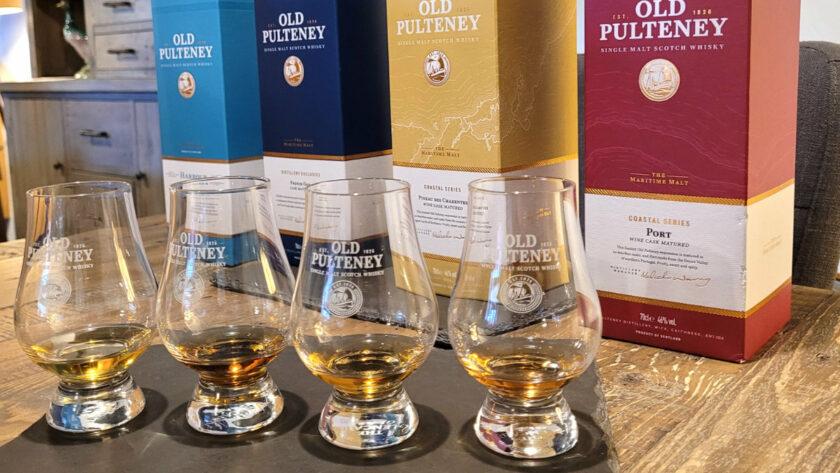One of the northernmost distilleries on the Scottish mainland
Old Pulteney is a single-malt Scotch whisky that is distilled in the Caithness town of Wick.
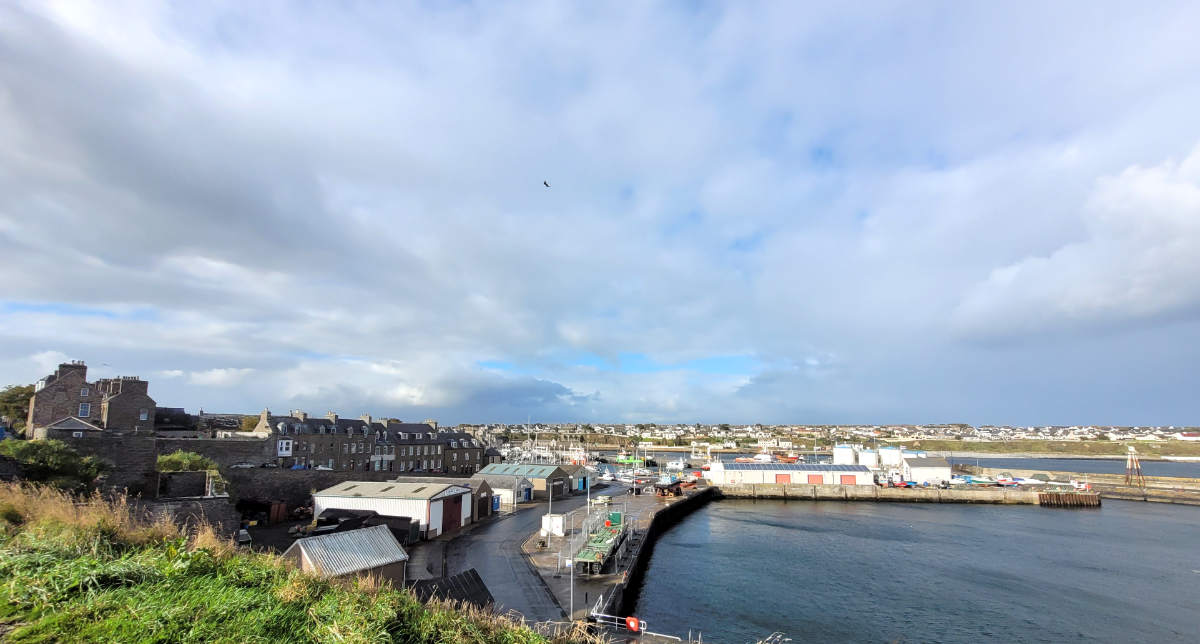
Wick is in the far north-eastern part of Scotland (and part of the NC500). This whisky is also known as “The Maritime Malt,” due to its location and production methods, such as bringing the barley in by sea and maturing the casks by the coast.
History
Let’s start with the story of Pulteney Distillery. It was founded in 1826 by James Henderson. It is named after the location within Pulteneytown in Wick. Pulteneytown, was constructed by Thomas Telford (who is mostly known for his bridges) and takes its name from Sir William Pulteney, the governor of the British Fisheries Board. He also gives his name to the Robert Adam designed Pulteney Bridge in Bath. Sir William Pulteney commissioned civil engineer Thomas Telford to create a fishing town and harbour at Wick to create jobs.

Interesting Point
If you are walking up from the harbour to Pulteney Distillery via Bank Street you will see a set of steps. These steps were immortalised by LS Lowry in his painting “Steps at Wick” from 1936.
Pulteney Distillery visitor centre
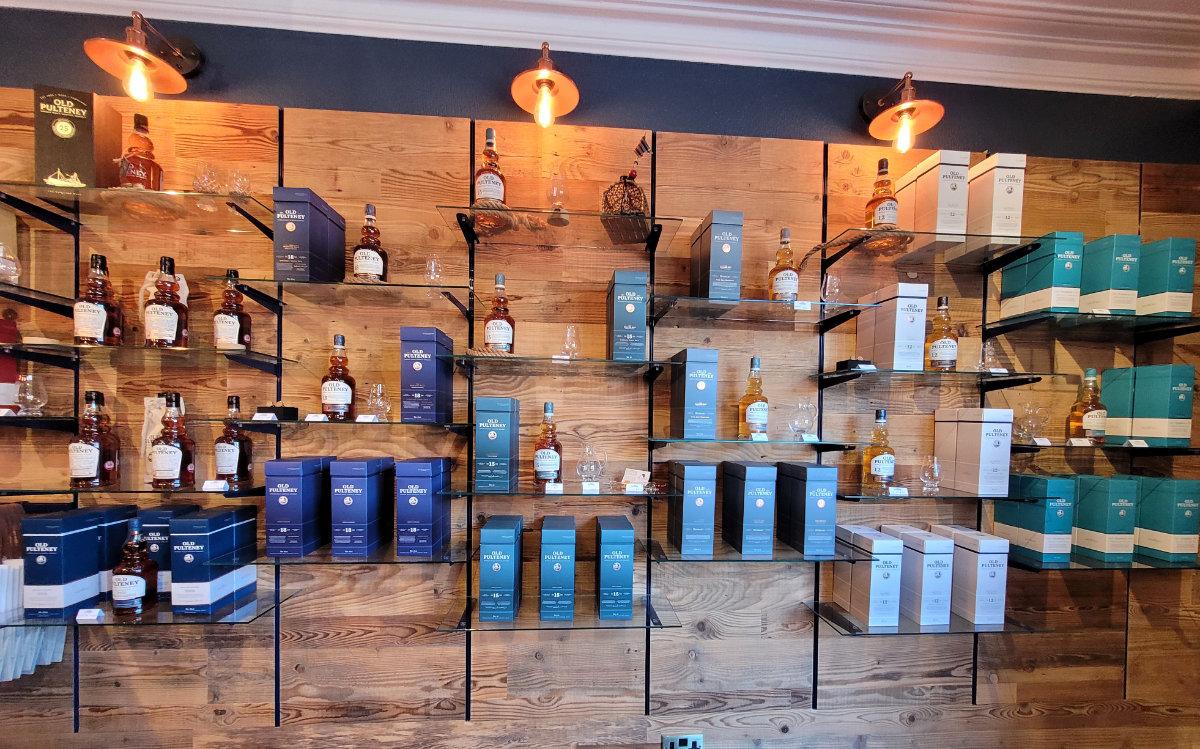
The visitor centre at the distillery is open year-round and offers a variety of tours.
A taste of Old Pulteney is priced at £20pp. This tour is an introduction to Old Pulteney and takes you on the journey of the creation of Old Pulteney. At the end you get to taste the Harbour whisky and Old Pulteney 12 year old and take home your own Glencairn tasting glass.
From the source is priced at £40pp and is a more in-depth guide to Old Pulteney. At the end you get to try 12, 15 and 18 year old expressions plus Huddart, with a Glencairn glass to take home.
A Toast to the Coast costs £65pp. This tour includes information from milling to maturation. At the end of the tour you can taste 12 year, Coastal Series port, Distillery Exclusive and Bourbon single cask. You also get a Glencairn glass to take home with you.
The Flagship Experience costs £125pp. Included in this tour is a full insight into the production of Old Pulteney. At the end of the tour you get to taste 12, 15, 18, 25, Bourbon & Sherry Single Casks and receive a crystal glass to take home.
How Old Pulteney Whisky is made
Old Pulteney uses unpeated malt, which allows the subtle salinity of the whisky to be tasted when having a dram. One of the unique features at Old Pulteney is the spirit still features a flat top, most stills have the lyne arm, that is the part of the arm that connects the column to the condenser unit, coming off straight from the still. This flat piece of copper creates a higher level of reflux when distilling therefore creating more flavours.
Mill
We start with barley. This is malted off-site and delivered to the distillery via a pipe which probably has an important name, however, I can’t remember what it was called.
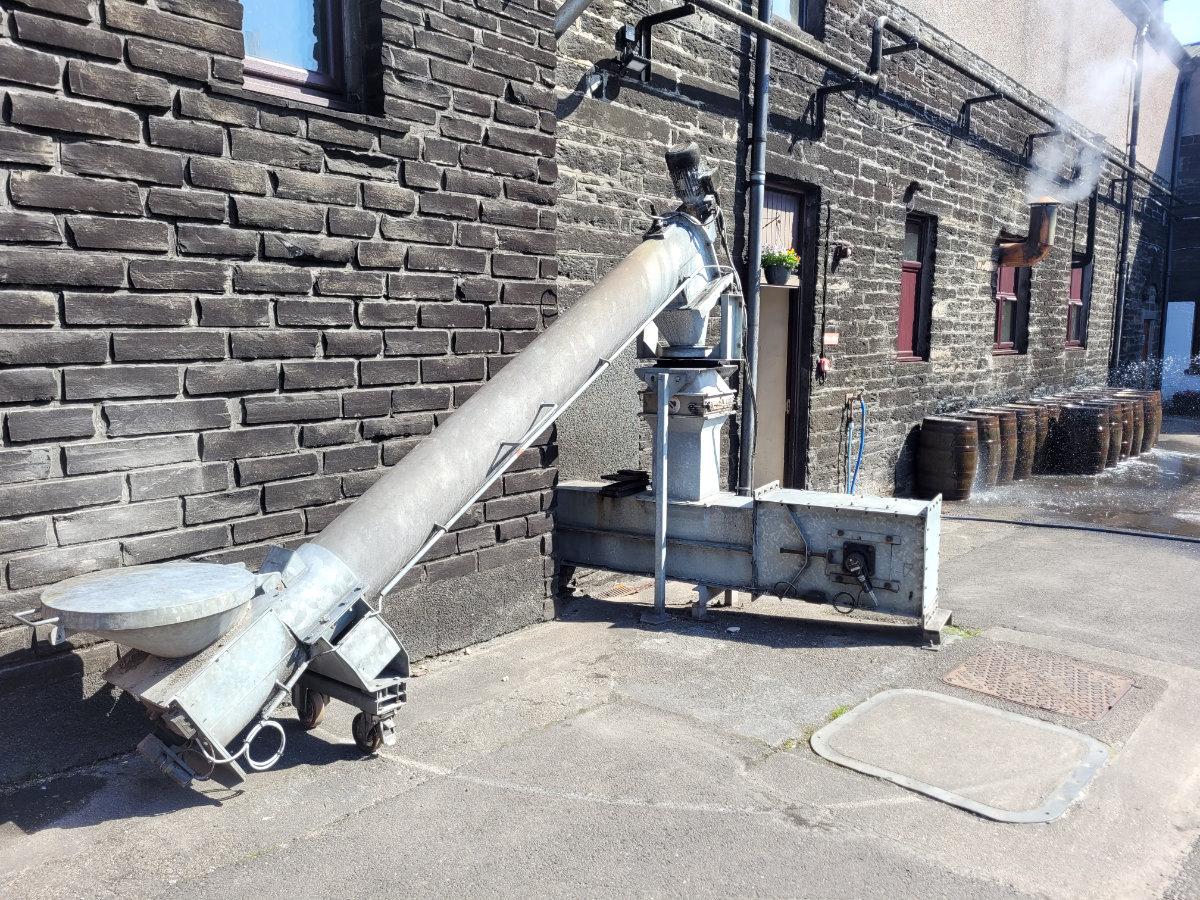 The malted barley is held in hoppers ready for delivery to the 100 year old Porteus mill. This mill processes five tonnes of barley into grist every two and a half hours.
The malted barley is held in hoppers ready for delivery to the 100 year old Porteus mill. This mill processes five tonnes of barley into grist every two and a half hours.

Grist is that name given to the crushed grain.
Mashing
The next important ingredient is water. This is sourced from Loch Hempriggs which is delivered through a lade which was designed by Thomas Telford in 1807.
This water is mixed with the grist in the mash tun.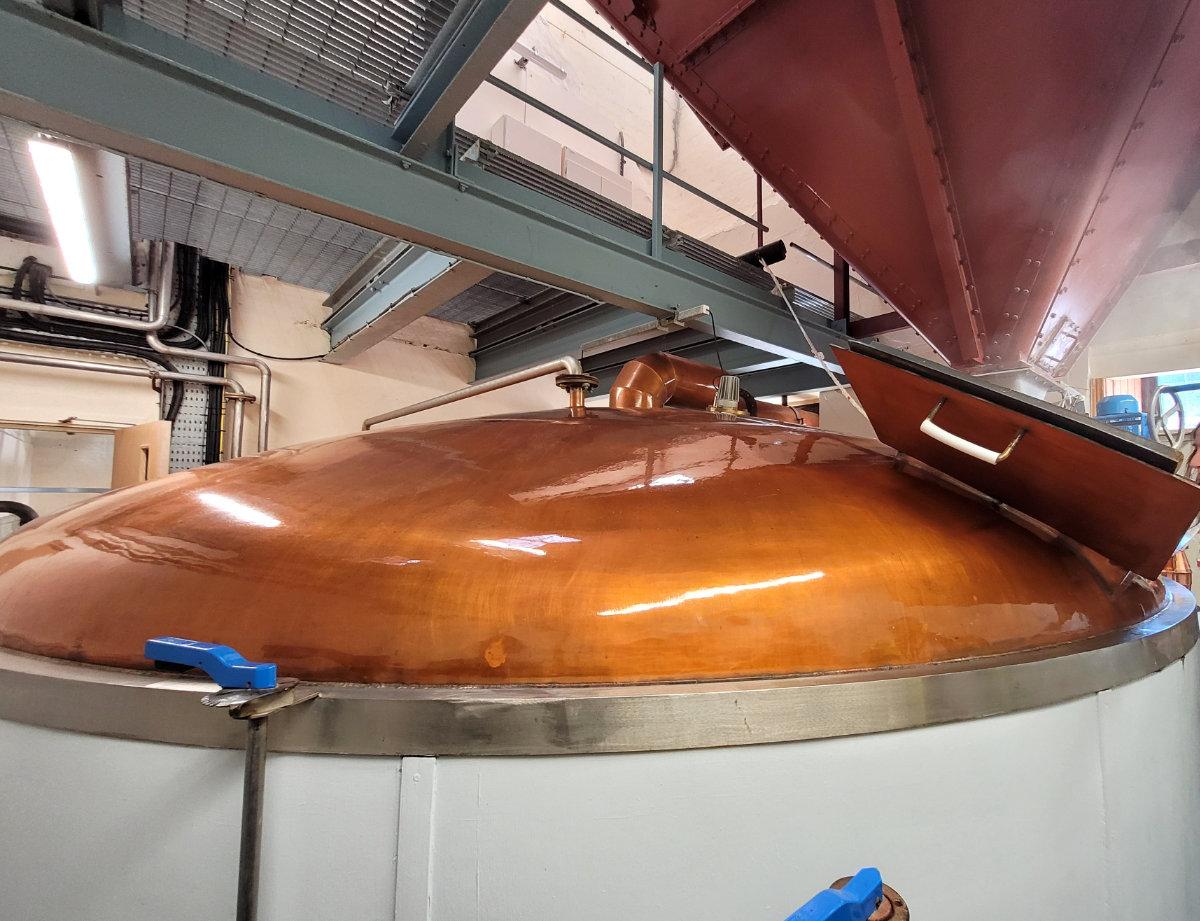
After four cycles in the mash tun, the liquid, now named mash, then moves through a cooler and then the yeast is added.

Dried yeast is used at Pulteney mainly due to the remote location as weather can hamper deliveries, which may mean no whisky production!
Washbacks
The yeast and water mixture, now known as wort , is added to a washback. There are six of these here, each holding 23,500 litres of mixture.
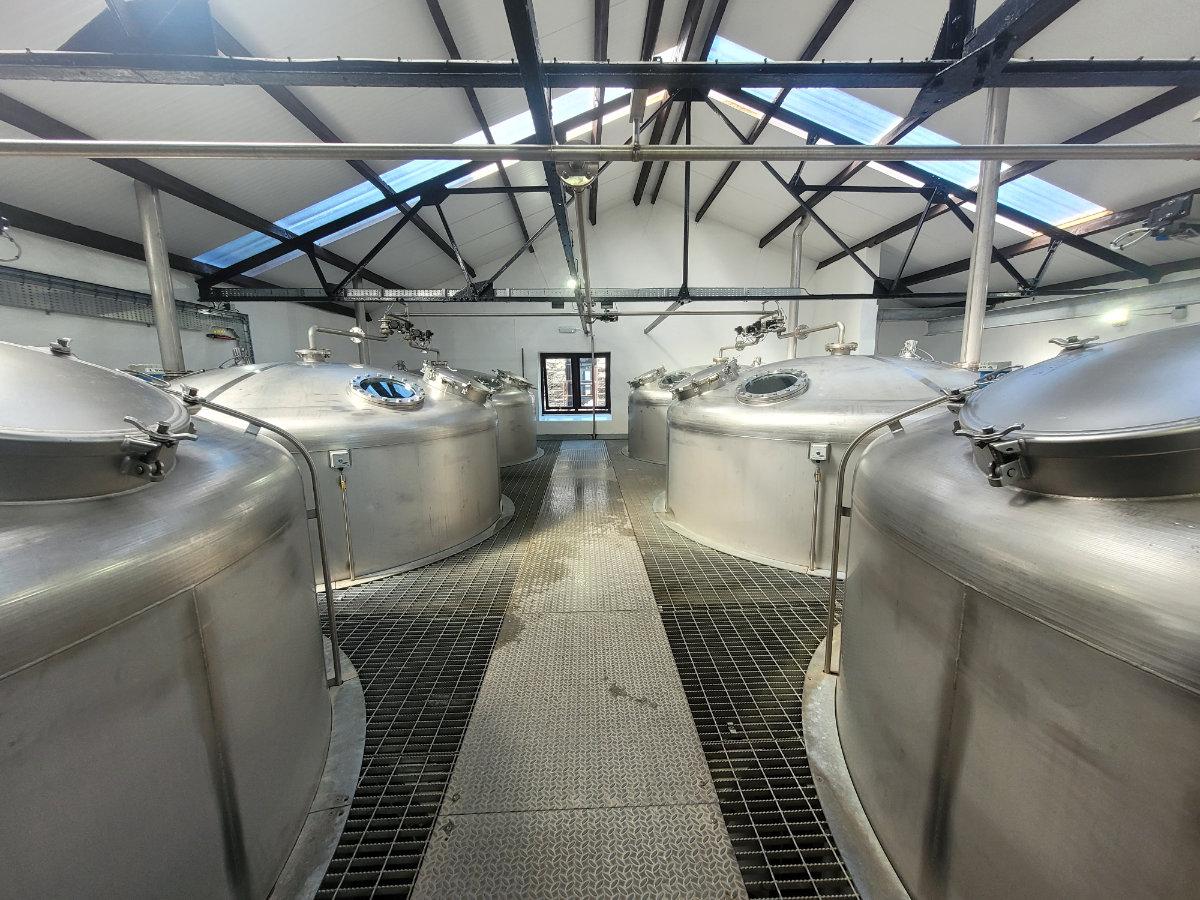
It is in these washbacks that fermentation takes place, at a constant temperature of 17°C, any higher, and the yeast would die. No yeast means no fermenation which means no whisky! The liquid has changed name again to “wash” and is beer like in taste and smell.
Distillation
This wash then moves into a room with two impressive looking stills – a wash still and a spirit still.
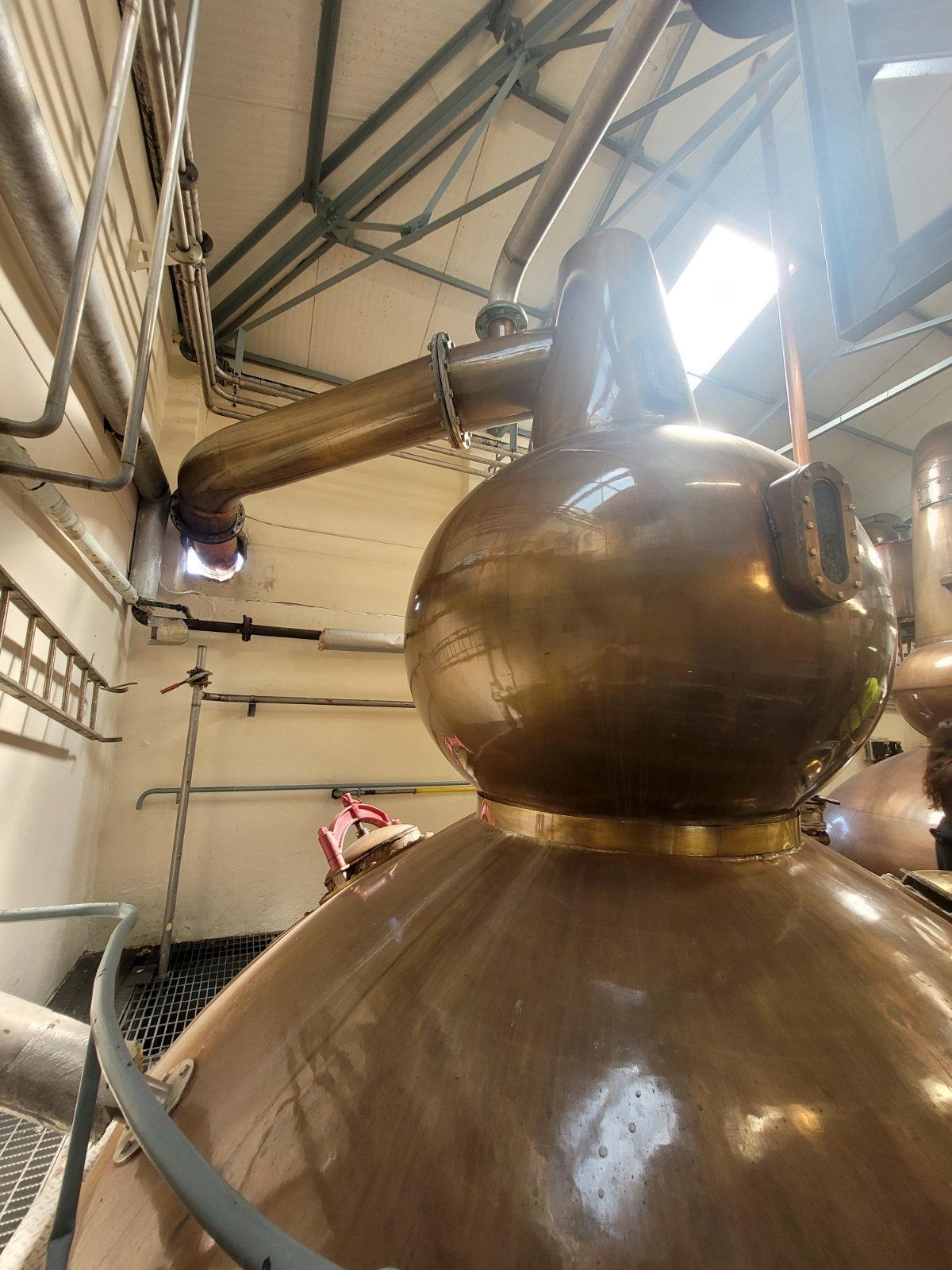
This mixture now named “low wines” is then moved into the spirit still for distillation. At the end of this process the alcohol content is around 70-80%!
The special shape of the stills at Pulteney distillery is said to be due to the height of the roof, seemingly whoever ordered the stills didn’t measure the heigh correctly so the top of the wash still is flat. The stills also have large bulbs, which you will see in the shape of the bottles.
The pot stills have large reflux bowls, so there is a lot of copper contact during distillation. More copper contact leads to a milder spirit.
After this step, the distillate is cooled outside in what is known as “worm tubs”.

The spirit is passed through an item known as a spirit safe. This safe monitors the volume of alcohol produced for tax purposes, plus lets the distillery control the flow of the new make.

At the side of the spirit safe you will see an old padlock, the key was held by the local Customs and Excise officer to ensure that there was no tampering.

The new make runs through the spirit safe, and if you look closely you will see that there are three spouts which lead to three tanks. These are called:-
Head – also known as foreshot
Heart
Tail – also known as feints
The distiller wants the middle part, the heart, for their whisky. The other two parts are fed back in to the distillation process. It is the job of the distiller to decide when to flick the spout to each tank and decide how much of the flavours they wish to keep.
The spirit is then moved into a “spirit receiver” where it is kept until the casks are ready to be filled.

Pulteney Distillery use American (ex bourbon casks) and Spanish oak casks (ex sherry casks). These are filled and stored in either a traditional dunnage, or in a racked warehouse. Dunnage is the method of storing casks usually three high on an earthen floor in either a stone or brick walled warehouse.
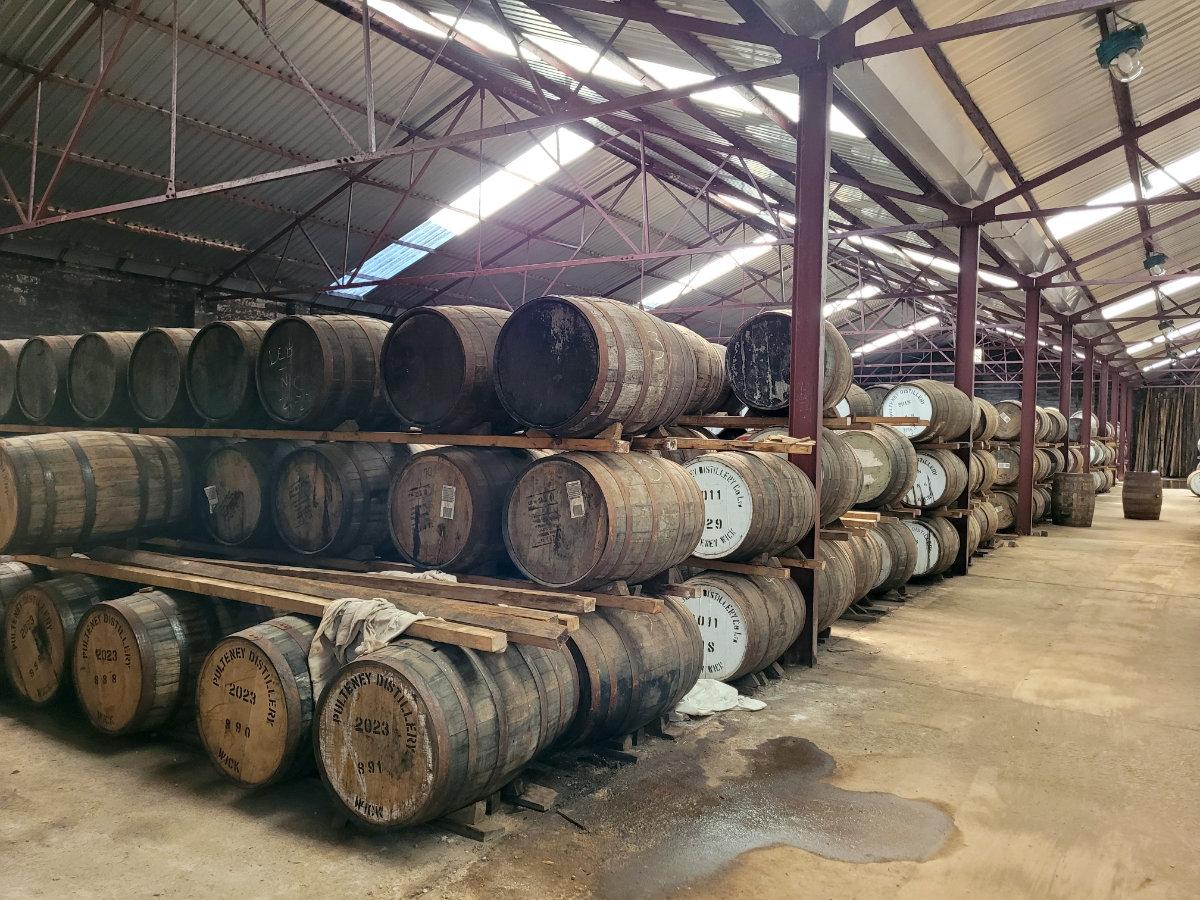
A racked warehouse can store many more casks as the casks are stored on a brick or steel structure.
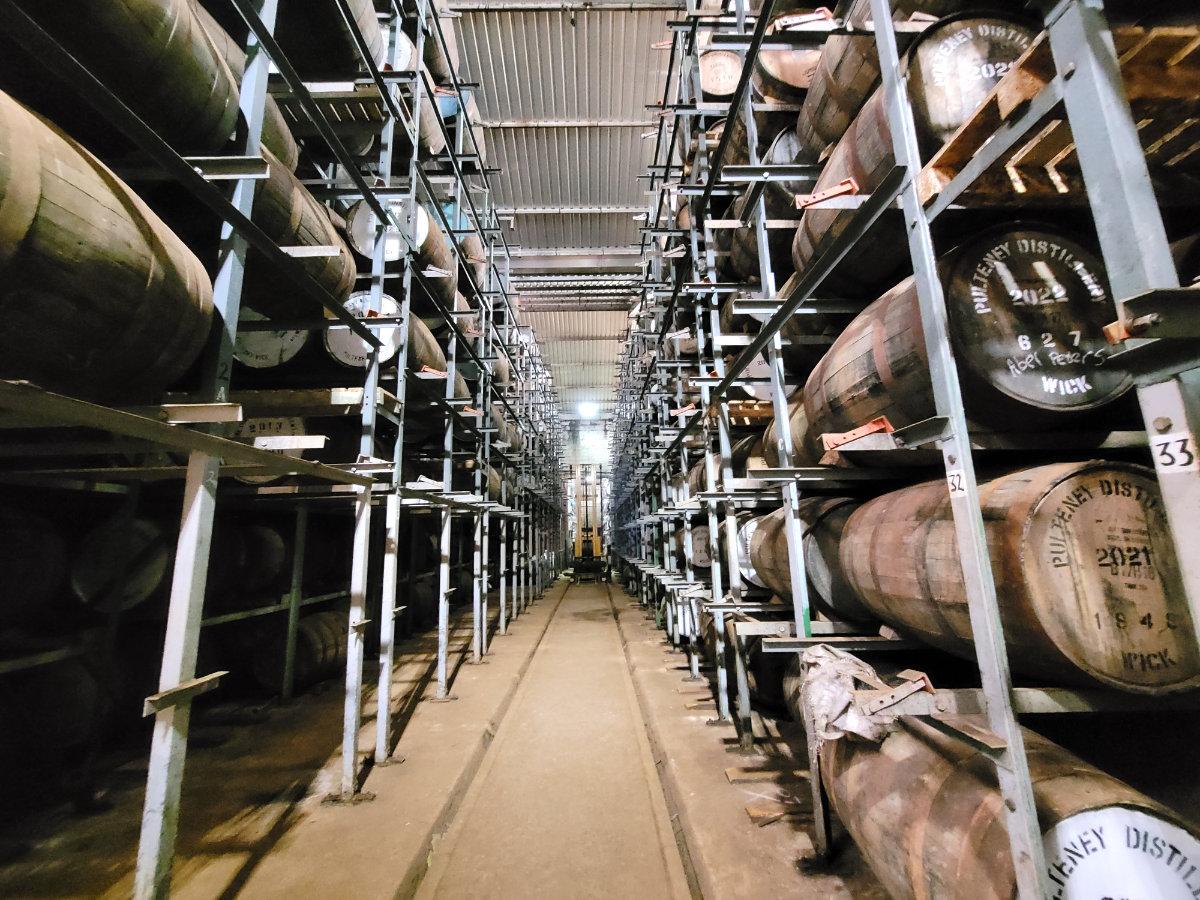
The temperature, humidity, and location of the warehouses affect the maturation of the casks making each whisky from each distillery different.

The whisky is then stored in these casks for three years and one day in order to be called Scotch Whisky. It is then bottled and sold to us to enjoy.
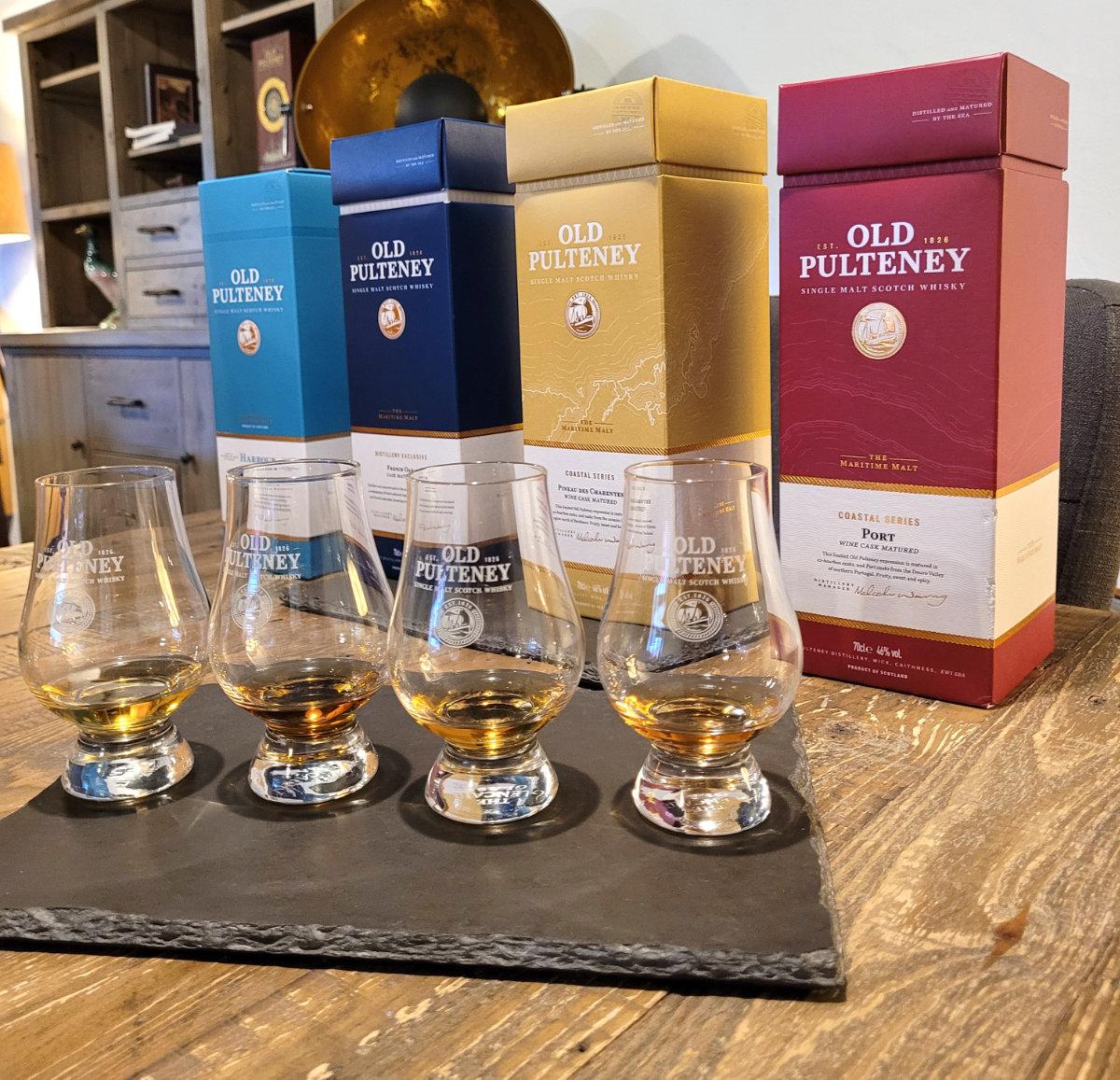
Where is Pulteney Distillery?
Pulteney Distillery, Huddart Street, Wick, Caithness, KW1 5BA
Opening Hours
April to September:
Monday to Friday: 10am – 5.00 pm
Saturday: 10am – 5.00 pm
October to March:
Monday to Friday: 10am – 4.30 pm
*As there are limited spaces on each tour, please book in advance to avoid disappointment.
How to get to Pulteney Distillery
The nearest airport is Wick, John O’Groats Airport, it runs flights to and from Aberdeen airport, where you can access connections to the rest of the UK.
The Scotrail service train runs from Inverness all the way to Wick where it terminates. We are then a 1mile walk to the distillery.
Wick is part of the NC500, so you have no excuse not to visit and take home a drivers dram, or stay over in Wick.


